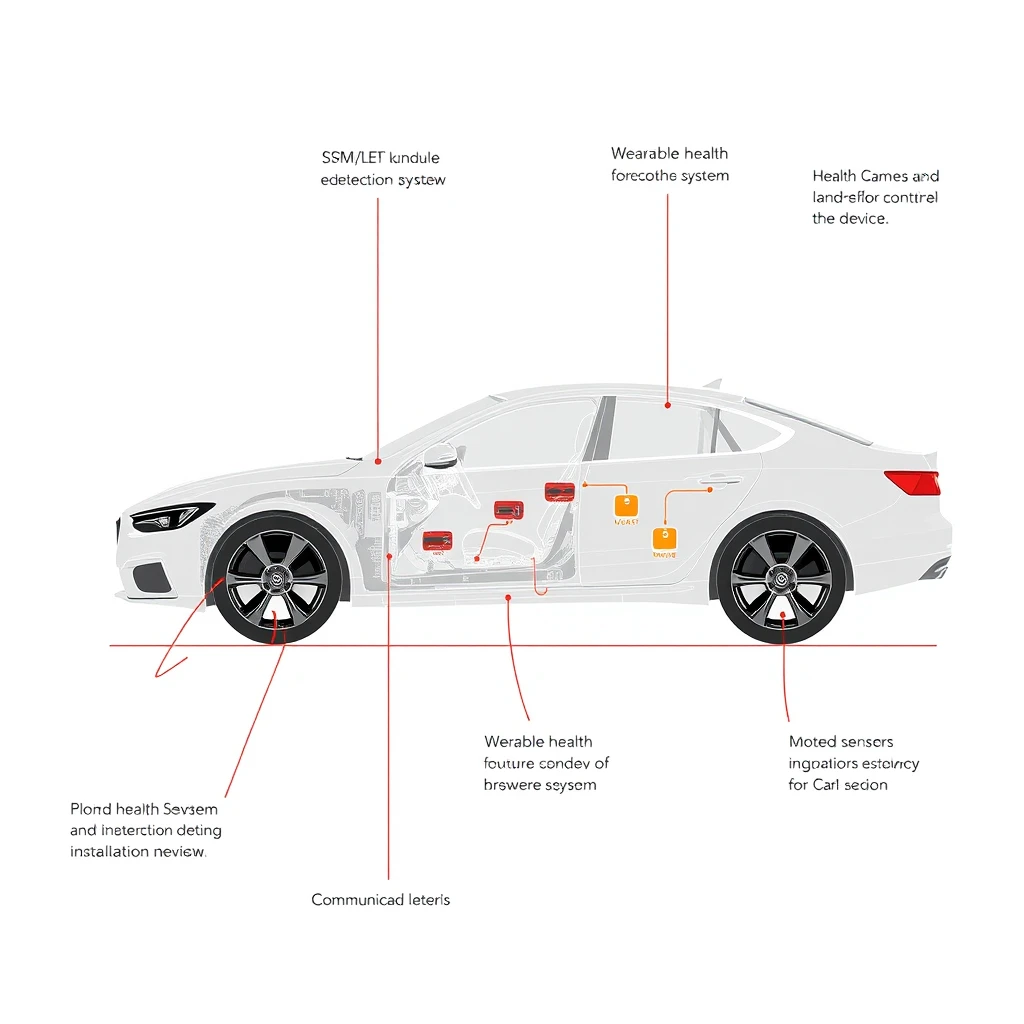Image IA créée par Flux AI Image Generator

Invitation
Create a detailed sketch of a car equipped with the following hardware components for an advanced accidental alert system. Clearly indicate the names of the components and their specific installation locations within the vehicle. Hardware Components and Installation Locations: Microcontroller/Processor: Location: Under the dashboard or in a central control unit. Accident Detection Sensors: Accelerometer and Gyroscope: Location: Integrated into the vehicle’s central control unit or under the dashboard. Impact Sensors: Location: Placed at strategic points around the vehicle (front, rear, and sides). Communication Modules: GSM/LTE Module: Location: Under the dashboard or in the central control unit. Wi-Fi/Bluetooth Module: Location: Integrated with the microcontroller. GPS Module: Location: Mounted on the dashboard or integrated into the vehicle’s navigation system. Health Monitoring Devices: Wearable Health Devices (Smartwatch/Fitness Band): Location: Worn by the driver (on the driver’s wrist). In-Car Health Sensors: Infrared Camera: Location: Mounted on the dashboard facing the driver. Pressure Sensors: Location: Integrated into the steering wheel. Heart Rate Monitor: Location: Embedded in the driver’s seat or steering wheel. Power Supply: Battery Pack: Location: Mounted in the trunk or under the rear seat. User Interface Components: LCD/TFT Display: Location: Mounted on the dashboard within the driver’s line of sight. Buzzer/Alarm: Location: Integrated into the dashboard. LED Indicators: Location: Positioned on the dashboard. Data Storage: SD Card Module: Location: Integrated with the microcontroller/processor. Connectors and Cables: Depiction: Show necessary wiring connecting all components, running neatly through the vehicle.
Analyse d'image
Analyse émotionnelle
Scénarios d'application
Immediate Response to Accidents
Description: Roadside Emergency Alert
Utilisation potentielle: Automatically notifies emergency services with location data and health status of the driver.
Proactive Health Alerts
Description: Health Monitoring during Drive
Utilisation potentielle: Monitors the driver’s health and provides alerts for any abnormal readings before a potential incident occurs.
Accident Analysis
Description: Post-Accident Data Retrieval
Utilisation potentielle: Stores data before, during, and after an accident for detailed analysis and insurance claims.
Safety Network
Description: Vehicle-to-Vehicle Communication
Utilisation potentielle: Shares real-time accident alerts with nearby vehicles to prevent further incidents.
Fatigue Detection
Description: Driver Fatigue Alert
Utilisation potentielle: Detects signs of driver fatigue and alerts the driver to take a break.
Analyse technique
Évaluation de la qualité: High-quality generation with clear specifications for each component
- Comprehensive integration of multiple technologies
- Real-time health monitoring capabilities
- Effective communication modules for emergency alerts
- Enhanced integration with existing vehicle systems
- Improved sensor accuracy in various environmental conditions
- Greater user customization options